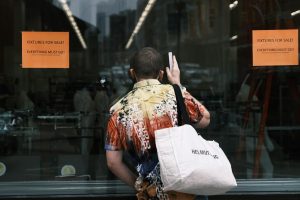Prices are going up on almost everything. Here's why

New York (CNN Business)Store closures in America are expected to drop to a five-year low in 2021– but that’s not exactly good news.
The reason is that the industry, which has been hurt in recent years by a shift to online shopping, may have bottomed out last year, when closures were the highest on record.
Retailers in the United States are on pace to announce around 3,700 store closures this year, the lowest annual figure since 2016, according to commercial real estate data and analytics firm CoStar Group (CSGP), which tracks retail chains’ publicly announced plans. The closures are estimated to account for about 40 million square feet of space, the lowest since CoStar began tracking such data in 2008.
Last year, a record 12,200 stores closed, according to CoStar, as the pandemic pushed consumers to limit their visits to stores.
So now, the pace of closures, logically, is slowing. Some of that is because many large chains that were on bankruptcy watch such as Sears, Payless and Ann Taylor parent Ascena Retail have already filed over the last two years. A bankruptcy filing often means store closures ahead. Only 10 retail companies have filed for bankruptcy this year, Moody’s said in an August 13 research report, compared with nearly 70 last year and 25 to 35 in the four years prior.
There’s also evidence of a recovery from a rough 2020. Customers have returned to shopping in person after vaccines rolled out and federal stimulus checks have bolstered their spending power.
That has provided some much-needed relief to some struggling retail stores that have been able to secure more favorable rent terms from landlords desperate for tenants.
“There’s less pressure to close,” said Ken Fenyo, the president of retail research and advisory firm Coresight Research. “You’re seeing a strong return to the store. People are spending and beginning to get back out. That’s suggesting to retailers that they close fewer of the stores than they have and try to take advantage of it.”
“It’s a good time to get a deal on rents,” he added, and some tenants have been able to negotiate more flexible terms with landlords to stave off closing.
A ‘big wildcard’
However, the spreading Delta variant could change the picture for store closings this year and next. If shoppers begin avoiding stores and shift more online, or if non-essential stores are required to temporarily close again, as they were early in the pandemic, permanent closings may accelerate.
“It’s certainly a big wildcard as we head into the fall and the holiday season that we can’t really account for,” said Fenyo. “If things did get bad and we saw the variant really begin to impact sales, we would expect to see an uptick in closures.”
In July, retail sales were up 15.8% from a year earlier, according to the latest Census Bureau data. Sales at clothing stores were up 43.4%, while department store sales increased 24.3%. Both areas have rebounded this year as many customers refresh their wardrobes after a year of sheltering at home.
But looking sequentially, July retail sales, excluding automobiles, fell 0.4% from the previous month, prompting questions about whether the virus’ resurgence will lead to consumers pulling back on spending.
In the long term, the continued growth of online shopping may also mean chains need fewer stores than they once did.
UBS estimates that around 80,000 US stores will close over the next five years as online shopping increases from around 15% of retail sales today to 27% by 2026. If e-commerce sales increase to 30% of retail sales by 2026, nearly 150,000 stores may close, UBS predicts.
Source: Read Full Article

